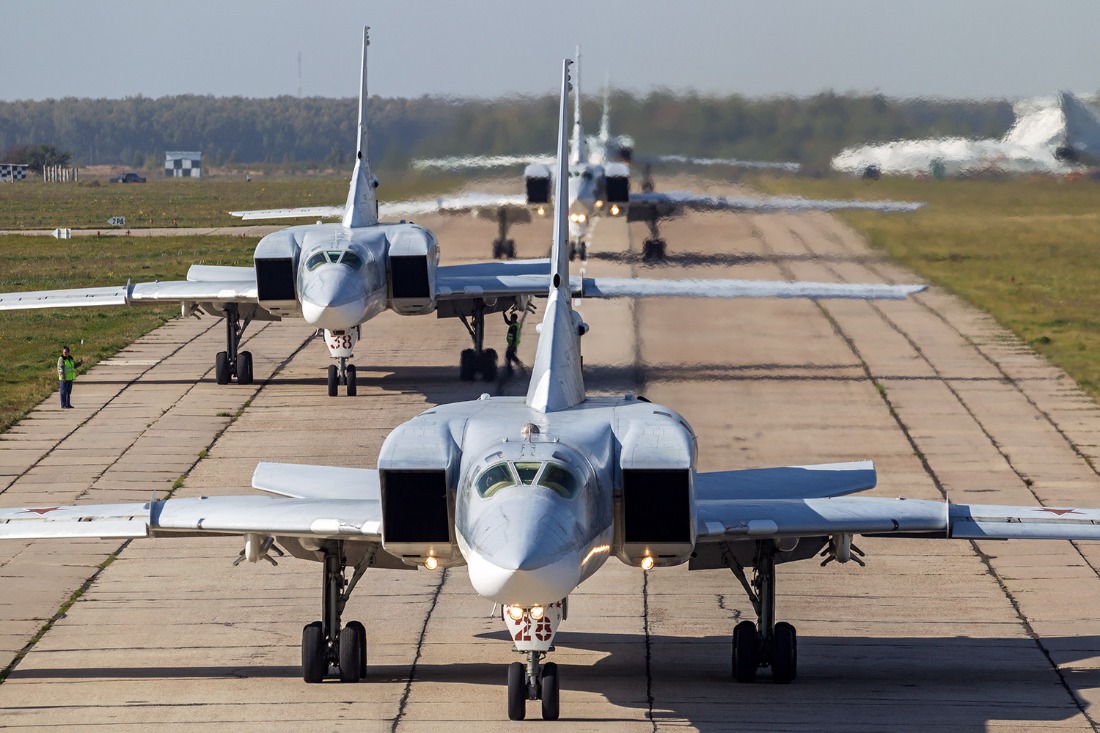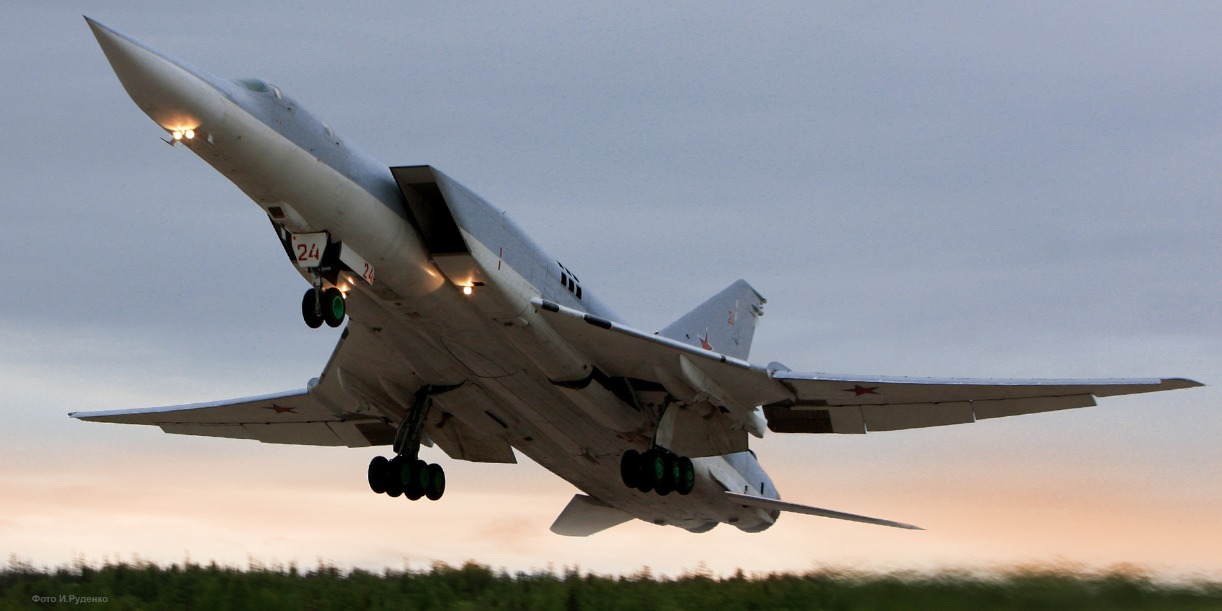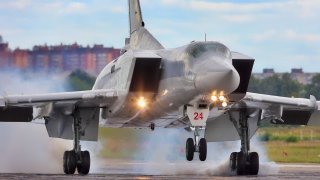Russia Freaked: Report Says Ukraine Used Drone to Strike Bomber in Arctic Circle
In a daring operation, Ukraine employed drones to strike a Russian Tu-22M3 bomber at the Olenya military airfield in Murmansk Oblast, deep within the Arctic Circle.
Summary and Key Points: In a daring operation, Ukraine employed drones to strike a Russian Tu-22M3 bomber at the Olenya military airfield in Murmansk Oblast, deep within the Arctic Circle.

-This marks the first time Kyiv has targeted Russian territory so far north, highlighting the reach of its drone capabilities.
-Ukrainian President Volodymyr Zelensky praised the precision of the attack, which aimed to reduce the Russian air threat. The Kremlin claimed it shot down several drones but has not confirmed damage to the bomber.
-The incident raises questions about Ukraine's drone launch points and Russia's defense vulnerabilities.
Drone On! Ukraine Used UAVs to Strike Russian Bomber in the Arctic Circle
Earlier this month, the Kremlin took much glee in declaring that its Federal Security Service (FSB) "thwarted" an attempt by Ukrainian intelligence to recruit a Russian pilot to hijack and defect with a Tupolev Tu-22M3 (NATO reporting name Blackfire) supersonic strategic bomber. However, this past weekend, Kyiv opted for a different tactic – it employed drones and reportedly flew it more than 1,000 miles to damage, and possibly destroy, at least one of the bombers.
If true, this could be the second Tu-22M3 bomber to have been destroyed on the ground, while another was shot down in April.
Deep in the Heart of Russia
It was just over a year ago that a Ukrainian drone was employed to strike the first Tu-22M3 at the Soltsy-2 air base in Novgorod Oblast. It was noted for being especially daring as it was several hundred miles from Ukraine – but this week, Kyiv's forces struck even deeper.
On Saturday, Ukrainian forces struck the Olenya military airfield in Russia's Murmansk Oblast, more than 1,100 miles from the front. It marked the first time that Kyiv had struck Russian territory within the Arctic Circle – and not far from Severomorsk, home to the Russian Navy's Northern Fleet.
Similar raids were carried out against the Engels airfield in the Saratov Oblast and the Diagilevo air base in the Ryazan Oblast. An oil refinery near the latter air base was also targeted.
"Each destroyed Russian airbase, each destroyed Russian military aircraft – whether on the ground or in the air – means saving Ukrainian lives. Guys, our warriors, I thank you for your precision!," Ukrainian President Volodymyr Zelensky said in a statement.
Moscow hasn't confirmed that the Tu-22M3 was damaged in the recent raid, but the Russian Ministry of Defense claimed that it had shot down a dozen "kamikaze drones" in five regions.
Long Flight?
There has been much speculation as to where the drones were launched from on Saturday, and if from Ukraine it meant the unmanned systems were remotely piloted vast distances without being observed. Alternatively, it has been suggested that Ukrainian operatives launched the drones from well within Russia.

The Kremlin may have assumed the region would be safe, as Kyiv is currently prohibited from employing Western-made long-range weapons on targets within Russia out of fear that it could escalate the war. However, Ukraine has employed drones instead, hitting military positions deep inside Russia, oftentimes without claiming direct responsibility.
The Olenya military airfield made for an inviting target.
"Some of the largest wilderness areas in the European part of the country are on the Kola Peninsula, and south of the Murmansk region is Arkhangelsk and Karelia, two sparsely populated large regions mainly covered by forest," The Barents Observer reported.
"It was a question of when, not if, Ukraine was going to strike the base," Associate Professor Lars Peder Haga with the Norwegian Air Force Academy also told The Barents Observer. "Still an impressive feat, with Olenya 1,800 km from the Ukrainian border, with more or less continuous GPS jamming in the region."
Russia has tried to downplay these strikes, and when acknowledging them, has labeled the attacks as acts of terror.
Tu-22 Blackfire Burning?
The Tu-22 was originally introduced in 1983, and it is in some ways analogous to the United States Air Force's B-1 Lancer.
Yet, whereas the B-1 has greater range and is a true intercontinental bomber, the Backfire is faster but is essentially a "theater" bomber in that it was designed to strike continental Europe and possibly some targets in the Atlantic. It also has far less bomb load capacity. The Federation of American Scientists reported, "Its low-level penetration features make it a much more survivable system than its predecessors."
The bomber saw limited use at the end of the Soviet-Afghan War, and Russia currently maintains a force of more than 100 Tu-22M bombers in all configurations. The Backfire also was used in nearly 100 operational sorties against rebels in Chechnya in the mid-1990s and Georgian forces in the 2008 South Ossetian war. One of the Tu-22Ms was lost in combat, shot down by a Georgian missile in the latter conflict.

The Tu-22M3 is a modernized version, developed in the early 1980s and it officially entered service in 1989. It has an operating range of 7,000 km (4,350 miles) and is capable of carrying nuclear weapons. It was on April 14, 2022, that Tu-22M3s were employed in the conflict in Ukraine for the first time, where the bombers dropped "dumb bombs" as part of the Kremlin's campaign to take the then-besieged city of Mariupol.
Author Experience and Expertise: Peter Suciu
Peter Suciu is a Michigan-based writer. He has contributed to more than four dozen magazines, newspapers, and websites with over 3,200 published pieces over a twenty-year career in journalism. He regularly writes about military hardware, firearms history, cybersecurity, politics, and international affairs. Peter is also a Contributing Writer for Forbes and Clearance Jobs. You can follow him on Twitter: @PeterSuciu. You can email the author: [email protected].
All images are Creative Commons and/or Shutterstock.


